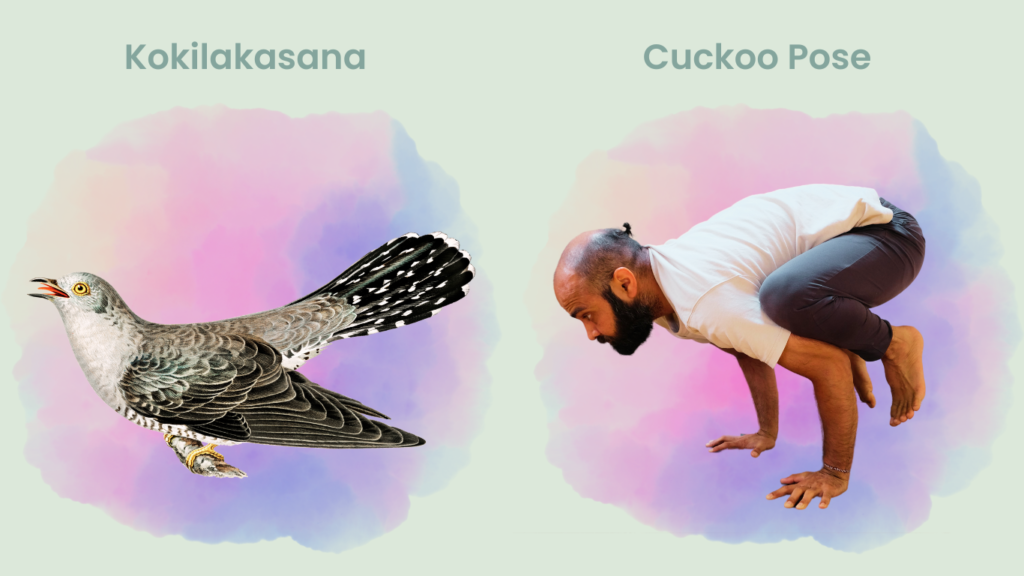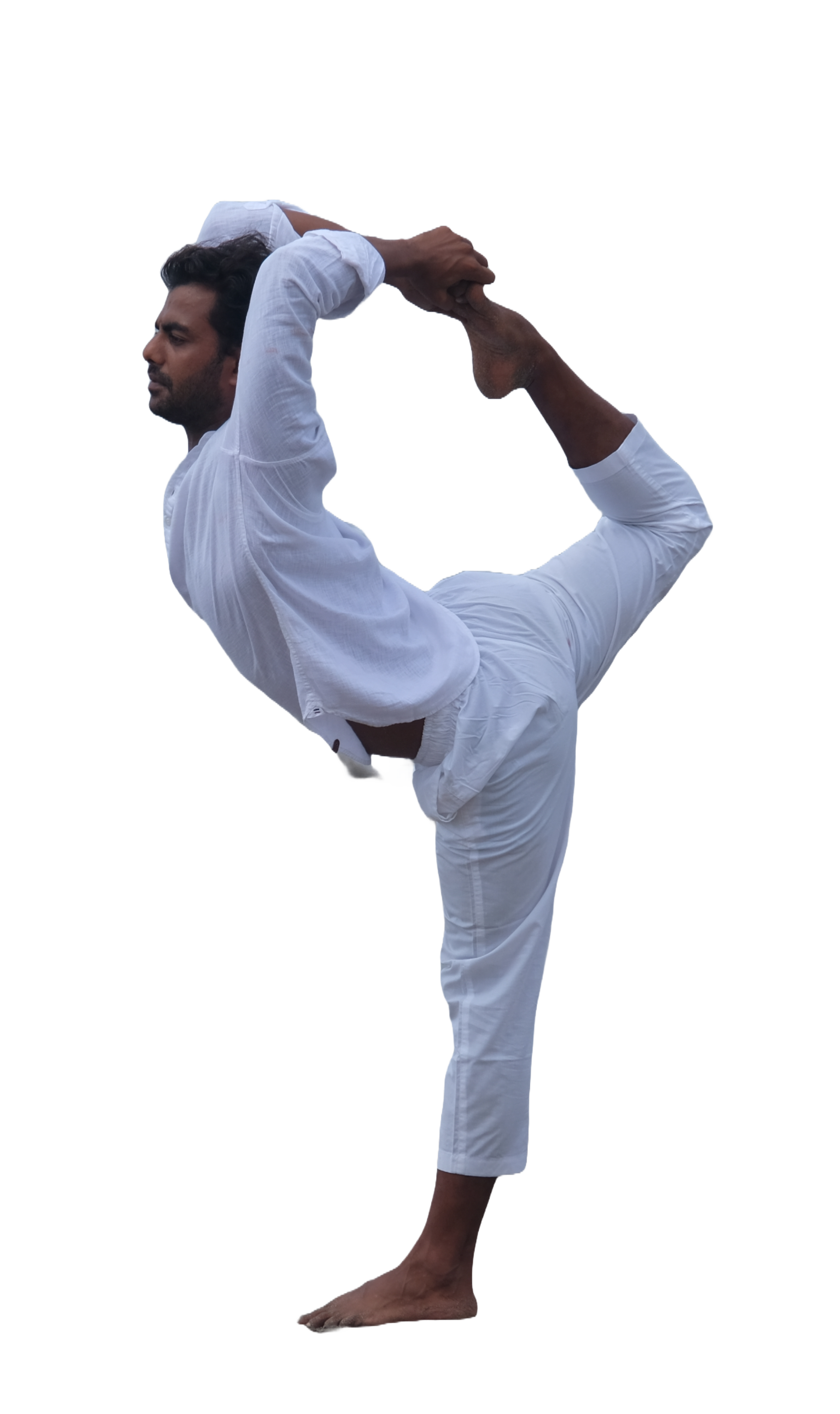-
-
Yoga Courses
Yoga Teacher Training India
Yoga Teacher Training Canada
Yoga Teacher Training Germany
Yoga Teacher Training Greece
Yoga Teacher Training Portugal
-
Yoga Retreats
-
YTTC Guide

Sanskrit: कोकिलकासन
Kokilakasana, also known as Cuckoo Pose, derives its name from “Kokila” (Sanskrit for “cuckoo”), a bird celebrated for its distinct call. The cuckoo is often associated with new beginnings and the arrival of spring, symbolizing freshness and a joyful spirit. In Hindu mythology, the cuckoo is seen as a symbol of divine love and purity of expression.
Begin by squatting with your feet about hip-width apart.
Place your hands on the floor in front of you, fingers spread wide for stability.
Bring your knees high onto your upper arms, similar to crow pose.
Ensure that your elbows are bent and pointing backward.
Lean forward, shifting your weight onto your hands.
Engage your core muscles to help lift your feet off the floor.
Gradually lift one foot off the ground, followed by the other.
Balance on your hands, ensuring your body remains aligned and stable.
Unlike crow pose, in cuckoo pose keep your feet flexed and your toes pointed toward the floor.
Keep your gaze forward to help maintain balance.
Breathe deeply and steadily to support focus and stability.
Hold the pose for a few breaths.
Gently lower your feet back to the ground and return to a squat position.
Builds strength in the arms, wrists, and shoulders, essential for balancing on your hands.
Engages and strengthens the core muscles, improving overall stability and balance.
Challenges balance and coordination, enhancing body awareness and control.
Compresses the abdominal area, which may aid digestion and stimulate the digestive organs.
Opens the hips and encourages better hip flexibility.
Avoid this pose if you have wrist injuries or chronic wrist pain, as it places significant pressure on the wrists.
Those with shoulder injuries or instability should practice caution, as the pose demands strong shoulder engagement.
Pregnant women should avoid this pose or practice it with proper modifications to prevent abdominal pressure.
Individuals recovering from recent abdominal surgery should avoid this pose or consult a healthcare provider before attempting it.
If you have high blood pressure, perform this pose with caution.
Avoid this pose if you have carpal tunnel syndrome or other wrist-related conditions.
Place a yoga block or bolster under your feet to elevate your hips, making it easier to lift your feet.
Place a bolster in front of you to cushion your head in case of a fall.
Maintain steady and controlled breathing to support balance and concentration.
Perform the pose with the guidance of a spotter or yoga instructor who can assist with alignment and safety.
Start by lifting one foot at a time and gradually build up the strength and balance to lift both feet.
Learn Other Poses:
Popular Courses in Bali
200 hour Yoga Teacher Training in Bali | 300 hour Yoga Teacher Training in Bali | 500 hour Yoga Teacher Training in Bali | 50 Hours Yin Yoga Training in Bali | 50 hours Pranayama Training in Bali | 50 hours Yoga Nidra Training Bali | 50 hours Arm Balancing Training Bali | 100 hour Ashtanga Training Bali
Popular Courses in Germany
200 hour Yoga Teacher Training in Germany | 300 hour Yoga Teacher Training Germany | 50 Hour Yin Yoga Training Germany | 50 Hour Pranayama Training Germany | 50 hour Yoga Nidra Training Germany | 50 Hour Arm Balancing Training | 100 hour Ashtanga Training Germany
We are offering a special price for the first 6 registrations
per month!
